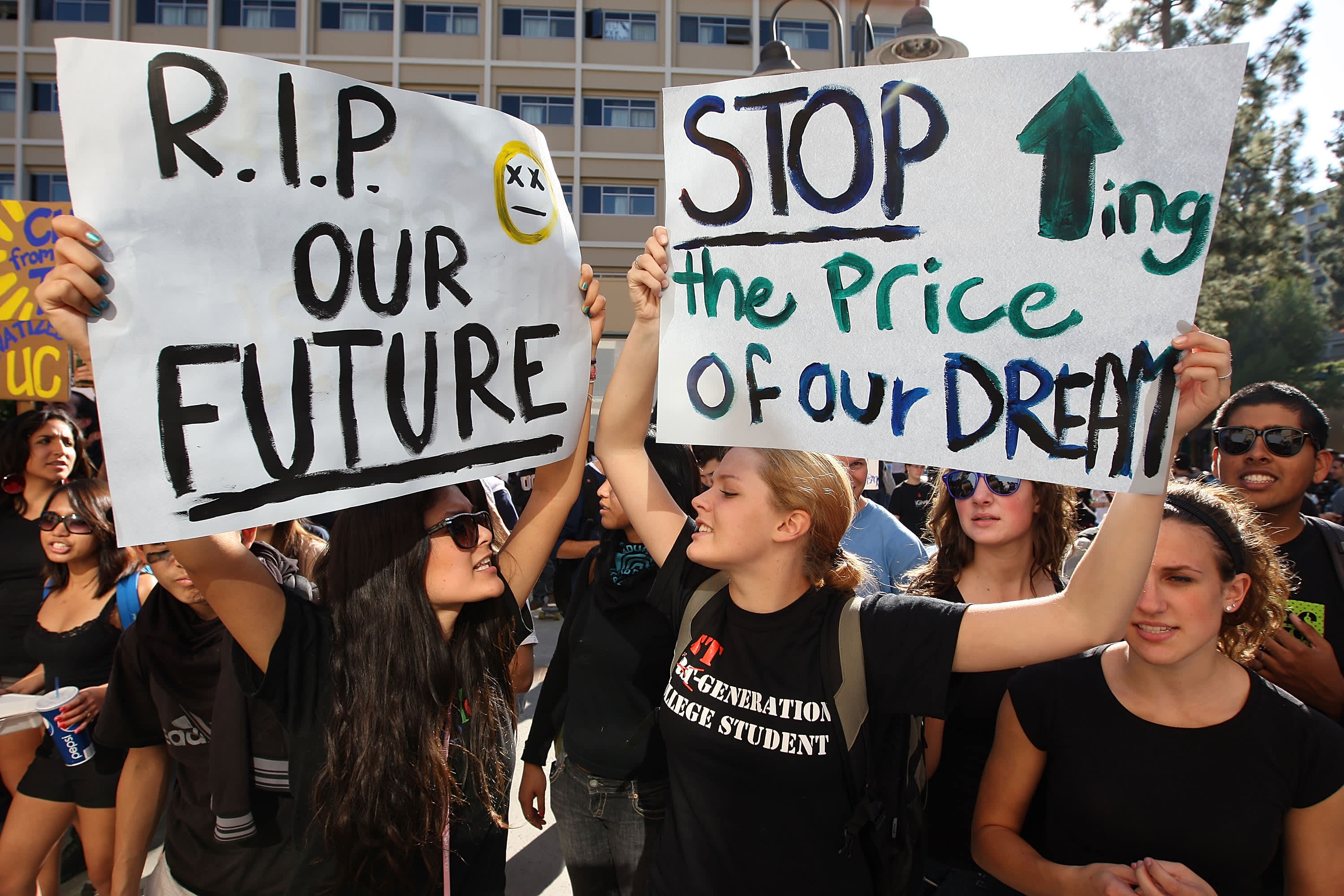Understanding the College Debt Crisis
Understanding the College Debt Crisis in today’s vibrant yet volatile economy, education has long been heralded as the golden ticket to prosperity. Yet, in a paradoxical twist, the pursuit of higher learning has ensnared millions of Americans in a seemingly inescapable financial labyrinth — the college debt crisis. This growing issue is not just about numbers; it’s about dreams deferred, ambitions altered, and futures compromised.
The Genesis of the Crisis
The college debt crisis did not erupt overnight. It germinated over decades, rooted in a complex interplay of rising tuition costs, stagnant wages, and a cultural narrative that places supreme value on a four-year degree. Once seen as a modest investment with guaranteed dividends, college education has morphed into a high-stakes gamble.
In the 1970s, the cost of college could often be covered by a part-time job or a modest family contribution. Fast forward to today, and students are facing tuition bills that can rival the cost of a small home. Without a proportional increase in median incomes, borrowing has become the default strategy for many families.

The Numbers Tell a Harrowing Tale
Let’s delve into some figures that paint the gravity of the college debt crisis:
- Total student loan debt in the United States has surpassed $1.7 trillion.
- The average borrower owes about $30,000.
- Approximately 45 million Americans are burdened by student debt.
These are not abstract statistics. They represent millions of personal stories, each tinged with its own blend of hope and hardship.
Who Bears the Brunt?
While the college debt crisis touches a wide demographic swath, some groups are disproportionately affected. First-generation college students often lack access to financial literacy resources that could help them navigate loan systems. Minority communities, particularly Black and Hispanic students, are statistically more likely to incur higher amounts of student debt and face greater challenges in repayment.
Moreover, women carry roughly two-thirds of all student debt, despite earning less than their male counterparts after graduation. This gender disparity further amplifies the ripple effects of the college debt crisis across society.
How Did We Get Here?
Several seismic shifts have propelled us toward this crisis:
1. Diminishing State Funding
Public universities once leaned heavily on state funding to keep tuition low. As states slashed budgets in the wake of recessions and shifting priorities, institutions compensated by hiking tuition rates.
2. Ballooning Administrative Costs
While student services and amenities have improved, administrative expenses have also skyrocketed. Lavish campuses come at a steep price, often funded by the very students they aim to attract.
3. Easy Access to Loans
The ready availability of federal loans ironically contributed to tuition inflation. Colleges recognized that students could borrow more, so they charged more, fueling a vicious cycle.
4. Shifting Job Market
The 21st-century job market increasingly demands degrees for positions that previously required only a high school diploma. This degree inflation has led students to feel compelled to pursue higher education — and, consequently, higher debt.
The Psychological Toll
The college debt crisis is not merely a financial quandary; it’s an emotional one too. Anxiety, depression, and a persistent sense of entrapment are common among borrowers. For young adults fresh out of college, the burden of loans often delays major life milestones such as marriage, homeownership, and starting a family.
The pervasive pressure to prioritize loan repayment over personal fulfillment can stifle creativity, risk-taking, and entrepreneurship. When debt dictates life choices, the vibrancy of a generation is dulled.
The Societal Impact
The ramifications of the college debt crisis extend far beyond individual borrowers. Here’s how:
- Reduced Consumer Spending: Heavily indebted graduates often cut back on major purchases, from cars to homes, which in turn affects the broader economy.
- Retirement Insecurity: Some borrowers are still paying off student loans well into their 50s and 60s, endangering their retirement savings.
- Talent Drain: High debt discourages graduates from pursuing lower-paying yet vital professions like teaching and social work.
In a ripple effect, the college debt crisis weakens the economic fabric and societal cohesion of the nation.
Solutions on the Horizon?
Addressing the college debt crisis requires multifaceted strategies. No single solution can untangle decades of systemic issues. However, several proposals have gained traction:
1. Loan Forgiveness Programs
Ideas ranging from partial forgiveness for public service workers to full-scale cancellation have stirred vigorous debate. While forgiving debt can offer immediate relief, it raises questions about fairness and sustainability.
2. Tuition-Free College
Some advocate for making public colleges tuition-free, funded by federal and state governments. This would ideally reduce future debt accumulation, though funding such programs remains a contentious issue.
3. Income-Driven Repayment Plans
Expanding and refining income-driven repayment plans can ease the burden by adjusting monthly payments to a borrower’s actual income, thus preventing defaults.
4. Better Financial Literacy
Empowering students with robust financial education before they take out loans could arm them with the tools to make more informed decisions.
Is College Still Worth It?
In light of the college debt crisis, one cannot help but ask: Is a college degree still a worthwhile investment?
Statistically, individuals with a college degree do earn more over their lifetimes than those without. However, the margins are narrowing, and the equation is becoming increasingly complicated by debt load.
Fields like engineering, healthcare, and computer science still offer strong returns on investment. Conversely, degrees in less lucrative disciplines may lead to debt levels that are difficult to justify based on starting salaries alone.
Alternatives to the Traditional Path
In response to the college debt crisis, alternative education pathways are gaining popularity:
- Vocational Training: Skilled trades are experiencing a renaissance, offering stable careers without the hefty price tag of a four-year degree.
- Community Colleges: Starting at a community college before transferring to a four-year institution can slash costs significantly.
- Online Education: Online degrees and certifications provide flexible, cost-effective alternatives for many career paths.
- Apprenticeships: Programs that combine work and study allow students to earn while they learn, minimizing debt accumulation.
These non-traditional routes underscore a crucial truth: Success no longer strictly demands a linear educational trajectory.
The Role of Policymakers and Institutions
While individual choices matter, systemic reform is crucial to dismantling the college debt crisis. Policymakers must prioritize education funding, transparency in college costs, and borrower protections.
Colleges and universities must also hold themselves accountable. Greater focus on controlling administrative bloat, aligning curricula with market demands, and providing honest disclosures about job placement rates can help rebuild trust.
What the Future Holds
The future of the college debt crisis is unwritten. Technological disruption, shifting societal values, and political willpower will shape the next chapter.
Emerging trends suggest a possible recalibration of the college ideal. More employers are valuing skills over degrees. Micro-credentials and competency-based learning models are gaining traction. In this evolving landscape, adaptability and resilience will be paramount.
A Glimmer of Hope
Despite its enormity, the college debt crisis is not insurmountable. Innovative policy solutions, cultural shifts toward diversified education paths, and a growing emphasis on financial literacy could usher in a more equitable era of learning.
For individuals, navigating this terrain demands a blend of pragmatism and optimism. Choosing cost-effective education options, understanding loan terms intimately, and advocating for systemic change are all critical steps toward personal and collective empowerment.
The journey may be arduous, but it is not without hope. The aspiration for knowledge and self-betterment — the very heartbeat of education — remains alive and well. With concerted effort, the burden of the college debt crisis can be lifted, giving future generations the freedom to dream, to learn, and to soar.




